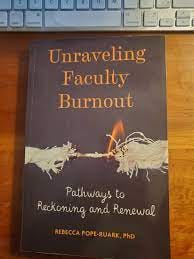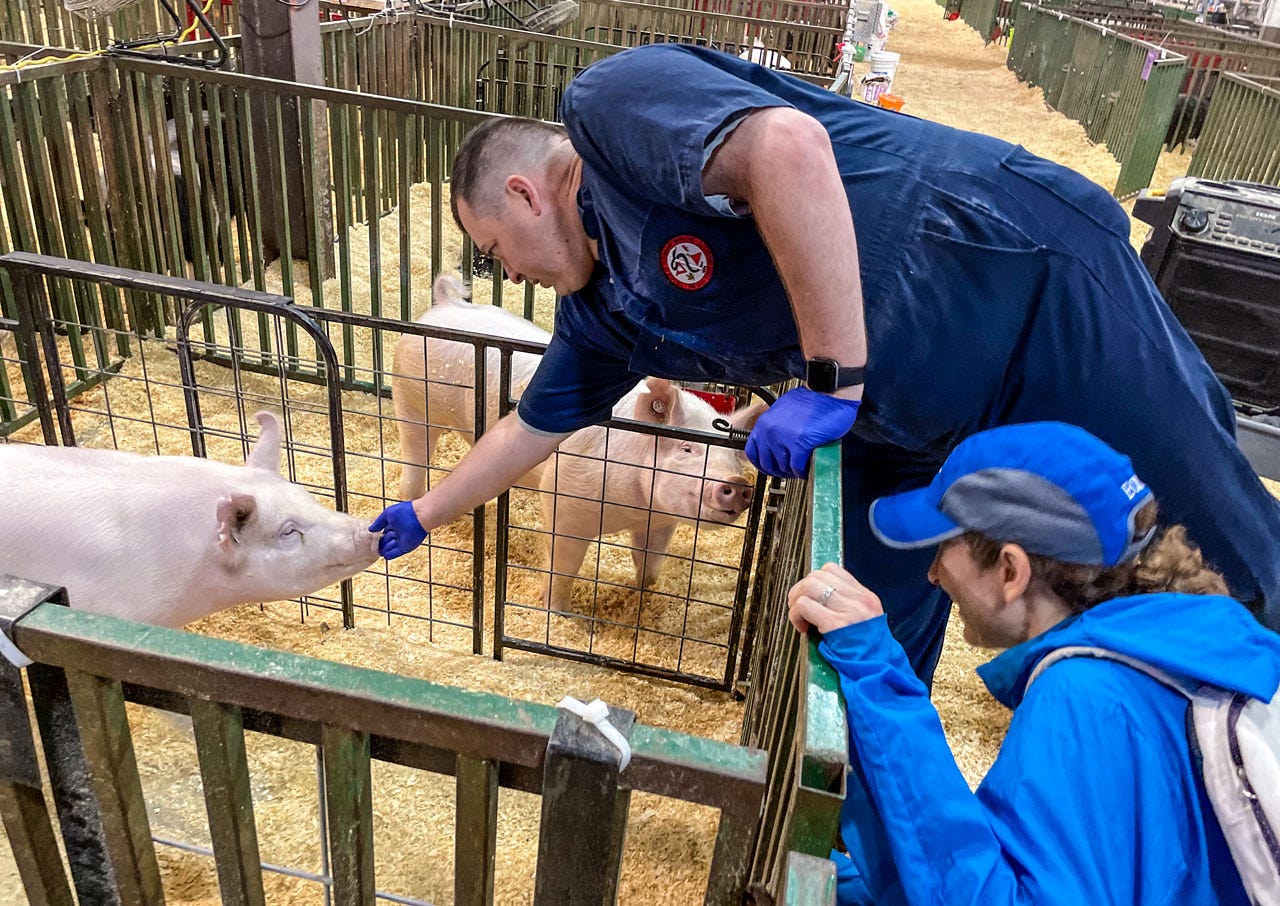Sci-Ed Update 236
Burnout in both students and faculty can be a serious thing. It pays to learn more about it, so we can help our students and ourselves.
How to prevent burnout at university
What is burnout and how can you avoid it? Psychologist and mental health adviser Gareth Furber shares his top tips for dealing with burnout at university
The term “burnout” was coined in 1974 by the psychoanalyst Herbert Freudenberger and Christina Maslach, a professor of psychology at the University of California, Berkeley.
Burnout is a combination of constant stress and exhaustion, leading you to feel disconnected and unable to do your work. It is more than feeling tired out after a hectic day or a busy week. Instead, burnout describes the psychological result of working beyond your means for an extensive period of time.
If you do experience burnout as a student, it’s easy to fall into a vicious cycle of feeling too stressed to work and therefore avoiding work, meaning you quickly fall even further behind.
KP: this might be a good article to share with our students
Read more→ AandP.info/pw5
Burnout is a serious issue that can affect your health, relationships, and job performance. It’s important to know the signs of burnout so you can take steps to prevent it from happening in the first place. But if you do experience burnout, don’t panic! There are ways for you to get back on track and feel good again.
Listen to this episode of The A&P Professor with Dr. Rebecca Pope-Ruark about how we can avoid, deal with, or be there for others experiencing burnout! You'll be glad you did!
To listen to this episode, click on the player (if present) or this link→ theAPprofessor.org/podcast-episode-91.html
Our guest in the above-cited podcast episode, Rebecca Pope-Ruark, has a new book out on faculty burnout. It’s titled, Unraveling Faculty Burnout: Pathways to Reckoning and Renewal. Click the link to browse the contents in your favorite bookshop.
Read more→ geni.us/D9nBsP
Biology textbooks published in the United States in the 2010s are lighter on climate-change content than those published in the 2000s.Credit: Kristopher Skinner/Bay Area News Group/Alamy
Climate-change content shrinks in US university textbooks
Sections on climate change have become shorter and moved farther back in biology textbooks since the 2000s.
University biology textbooks published in the United States in the 2010s contained less climate-change content than those published in the 2000s, despite the increasing urgency of the climate crisis1.
That’s not the only shift. In a survey of dozens of widely used introductory biology textbooks from the past 50 years, researchers also found that passages on climate change moved farther back in the books, and that the amount of information about its impacts grew, whereas the space devoted to solutions shrank. The work was published on 21 December in PLoS ONE.
The U.S. Public Health Service deceived the men in the syphilis study at Tuskegee (several participants shown here) and withheld treatment from those with the disease. “The wounds that were inflicted upon us cannot be undone,” Herman Shaw said in 1997. NATIONAL ARCHIVES
Medical racism didn’t begin or end with the syphilis study at Tuskegee
The study is often blamed for distrust of the U.S. health care system. It’s not that simple.
In the 50 years since its end, the U.S. Public Health Service Study of Untreated Syphilis at Tuskegee in Alabama has often been held up as a primary driver of distrust of the U.S. health care system in Black communities. Yet medical abuse of Black people has occurred throughout U.S. history.
White people have long justified abuse and mistreatment of Black people by describing them, explicitly and implicitly, as inferior. There have been “four hundred years of active decisions to dehumanize Black people and Black bodies,” says Rachel Hardeman, a reproductive health equity researcher at the University of Minnesota School of Public Health in Minneapolis.
Read more→ AandP.info/dkt
These Exercises Get You The Same Results in Less Time, Scientists Say
When it comes to exercise, an approach that's able to achieve the same results with less effort sounds too good to be true—but that's what researchers have discovered in an analysis of exercise techniques and subsequent changes in muscle strength and size.
The overall message is that exercise can make a difference even if it's limited in terms of repetitions, technique, and time; you don't have to spend hours at the gym each week to strengthen muscles and improve fitness.
"This latest study shows we can be far more efficient in the time we spend exercising and still see significant results by focusing on eccentric muscle contractions," says exercise and sports scientist Ken Nosaka from Edith Cowan University in Australia.
Read more→ AandP.info/e78
Image: PXhere
The Faculty Job (Almost) No One Wants
Chairing a department has never been easy. The pandemic has only made it tougher.
Chairing a department has never been easy. Doing so means occupying a strange in-between position in academe — not quite an administrator, nor only a faculty member — and navigating a complex set of workplace dynamics, particularly with department colleagues whom a chair, for the duration of her term, is asked to supervise and evaluate.
The chair’s position is often assumed to come with a measure of power and prestige; upon landing the gig, Sandra Oh’s character in the Netflix limited series The Chair proudly places a nameplate on her desk declaring her the one “in charge,” embellished with a handful of expletives. But upon taking over as chair — which, as many will attest, does not often include the cushy office Oh’s character inherits — scholars are more likely to find themselves hemmed in by administrative constraints and what they call an illusion of power.
ADENE SANCHEZ VIA GETTY IMAGES | While it’s true that the risk of experiencing pregnancy complications or infertility increases with age relative to those who are younger, the vast majority of people 35 and up have smooth and successful pregnancies.
The Term 'Geriatric Pregnancy' Isn't Just Offensive, It's Also B.S.
Here's the big reason why we need to change how we talk about pregnancy after the age of 35.
Research has shown that pregnant people of advanced maternal age are more likely to experience ectopic pregnancy, chromosomal abnormalities, gestational diabetes, preeclampsia and cesarean delivery. The risk of infertility also increases as you get older — it may take you longer to get pregnant and you may have a higher chance of having a miscarriage if you get pregnant, according to Rosenstein. But if you have regular periods every month, there is a good chance that you will be fine.
This doesn’t mean that all people who get pregnant over the age of 35 are doomed. In fact, in the vast majority of advanced maternal age pregnancies, everything is completely fine.
“When you do studies, you see that the risk of complications is higher in the older women, but the absolute risk is still very low,” Rosenstein said. The most likely thing is that everything will be fine.
Andrew Bowman (top) shows colleague Martha Nelson his pig snout swabbing prowess as they gather samples to test for flu at a show in Des Moines, Iowa.J. COHEN/SCIENCE
FAIR WARNING
“Swientists” hunt for influenza virus at hog shows, hoping to cut off the next pandemic at the pen
Bowman and his team were hunting for a most unwelcome guest at the Iowa show: influenza virus. Not all coughing pigs are infected, but Bowman’s work over the past decade has shown a “flu break” in even a few animals at a show like this can quickly spread the virus far and wide. As the best pigs fan out from the Des Moines event and other “jackpot shows” to competitions at the 2000 county and state fairs that take place across the United States through the early fall, they can carry flu with them. With about 150 million people visiting those events, the virus has plenty of opportunities to jump to humans, sickening people with flu outside its typical winter season.
Since 2010, the Centers for Disease Control and Prevention (CDC) has recorded nearly 500 human infections with those “variant viruses”—a term the pork industry prefers to the older, better known “swine flu.” (Researchers say this surely undercounts the actual number because standard flu tests cannot detect an infection with a variant virus.) Most infections fizzle out without further person-to-person spread, possibly because humans have substantial immunity to similar flu viruses. But if a pig virus emerged that did spread readily in people, it could spark a pandemic. “It’s about as real as any zoonotic threat,” says Martha Nelson, an evolutionary biologist at the National Institutes of Health (NIH) who has collaborated with Bowman for 7 years.










